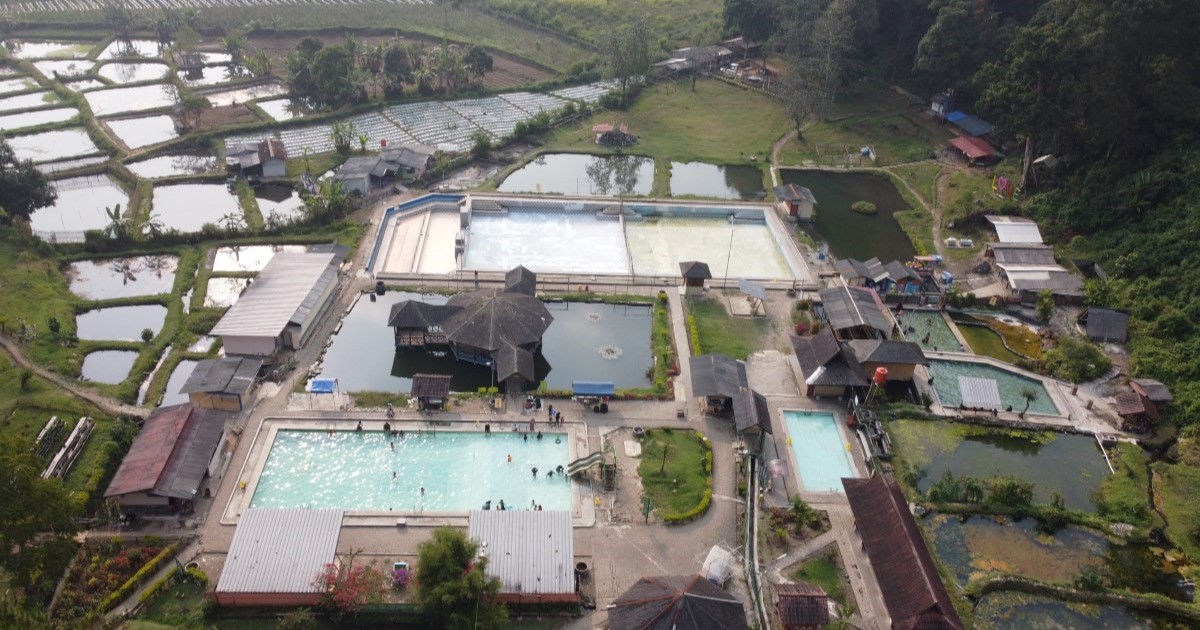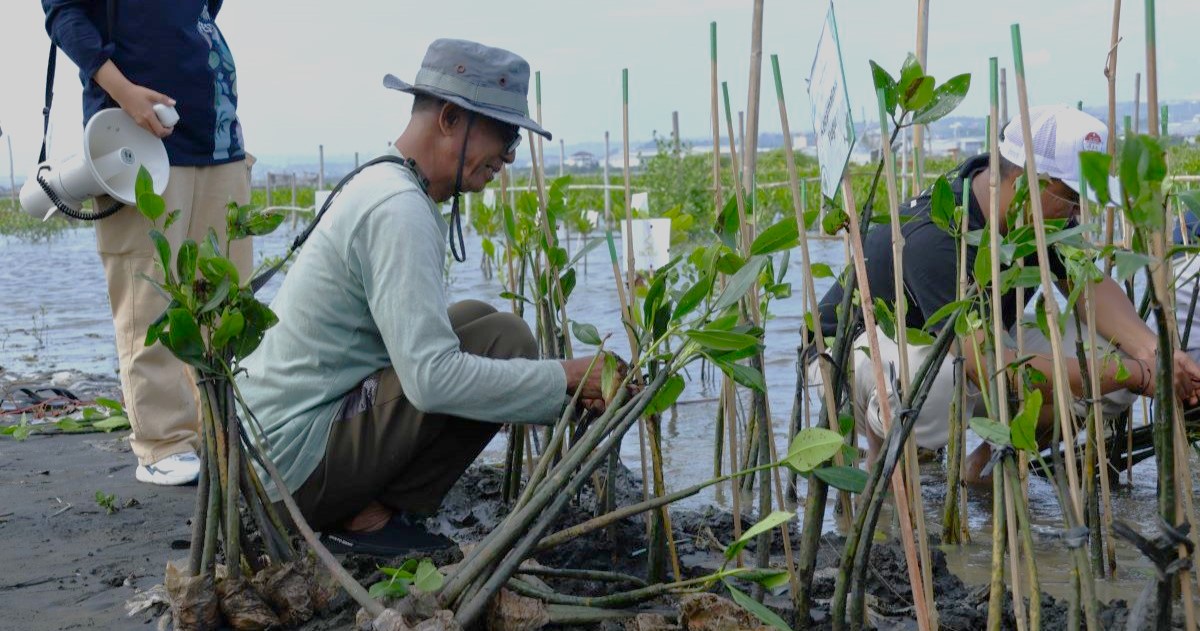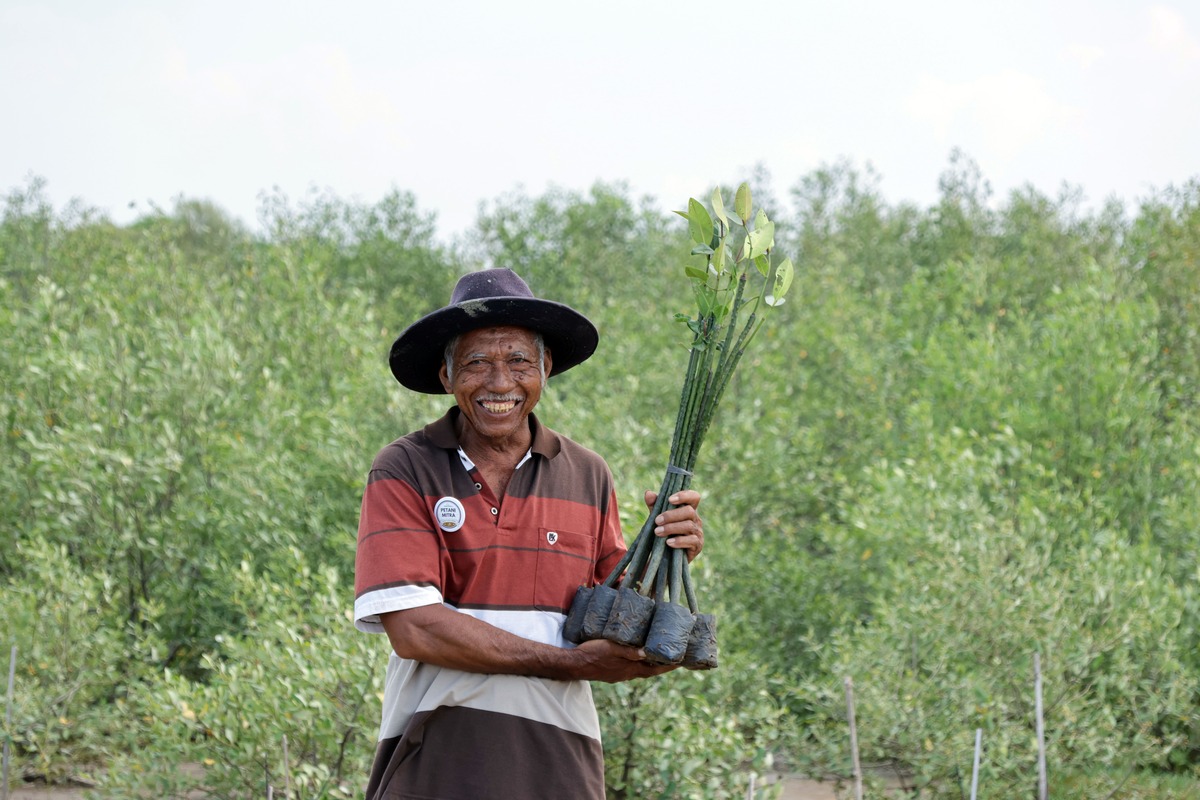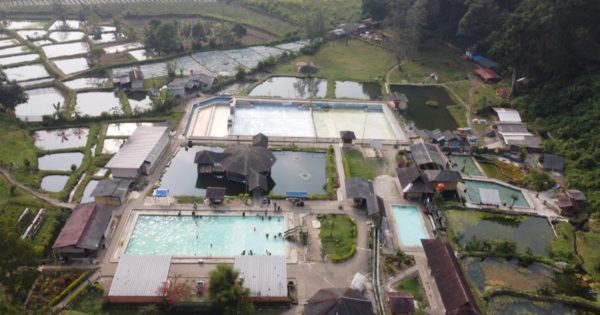
Travels in Java; Located around 30 miles (50 km) south of Bandung in Pengalengan, West Java, the Cibolang hot spring is surrounded by the beauty of nature. Now, with its growing reputation among tourists, Cibolang is bringing new meaning to the term ‘hot spot’.
In the surrounding landscape, visitors can roam around scenic tea plantations, dial up the adrenaline with river rafting trips, hike in the misty mountains, or simply unwind in the warm, volcanic water of the hot springs.
Perched at an altitude of 4,750 feet (1,450 meters) above sea level, Wanasuka Village is home to the 2-hectare Cibolang hot spring. It takes about two hours to get there from Bandung by car, on a journey through the verdant landscapes of West Java.
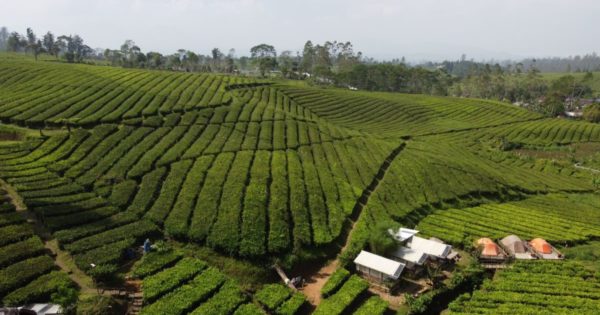
Tucked away between two mountains
At journey’s end, the Cibolang hot spring sits in the foothills of twin mountains, called Wayang and Windu. Up here, the air is cool and fresh, with temperatures rarely edging over 68 degrees Fahrenheit (20 Celsius). All around, fragrant pine trees and colorful calliandra combine to create the feeling of a secret glade in the forest.
According to local traditions, the mountains here are sacred places where gods reside. They are also the wellspring of the Citarum River, which flows from seven springs in Wayang mountain to a lake called Situ Cisanti, before joining the Citarum tributaries. Peoples say the water that trickles down from the mountain is divine, as it comes direct from the gods.
And the Cibolang hot spring is certainly a heavenly place to spend the day. The volcanic heart of the mountain warms the spring waters to temperatures between 104 and 115°F (40-46°C), creating a kind of natural bath or jacuzzi, tucked away in the forest.
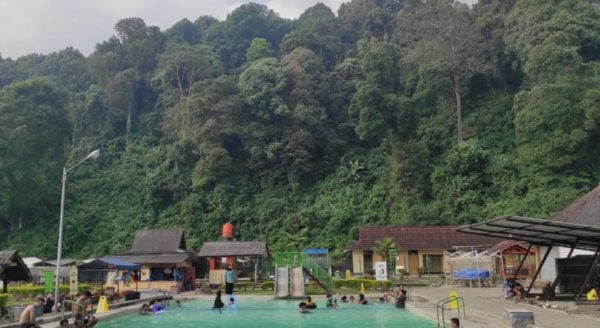
What to do in Cibolang Hot Spring
Established in 1990, the Cibolang hot spring complex provides visitors with access to three main pools, each filled with natural hot water that flows direct from the mountains.
Entrance tickets are just Rp25,000 (US$ 1.60) per person, and you can even grab yourself a private pool ticket for Rp40,000 (US$ 2.58) per person. This is a great way to let off steam with family and friends.
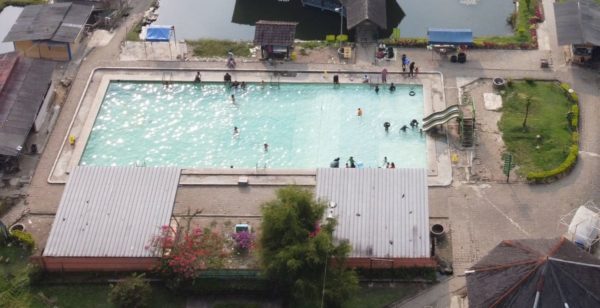
The Cibolang hot springs are open 24 hours a day, seven days a week. To get the most out of your trip, follow our top tips:
Top Tips: Visiting Cibolang Hot Spring
- Visit in the early morning and late afternoon, when the atmosphere is serene and magical
- The water is like a hot bath, so dip your toes first and acclimatize to the temperature
- Rent a mat and enjoy a picnic with friends and family
- Grab yourself private pool, then sit back and enjoy the view
- Don’t forget to bring a swimsuit!
Keeping Cibolang Green
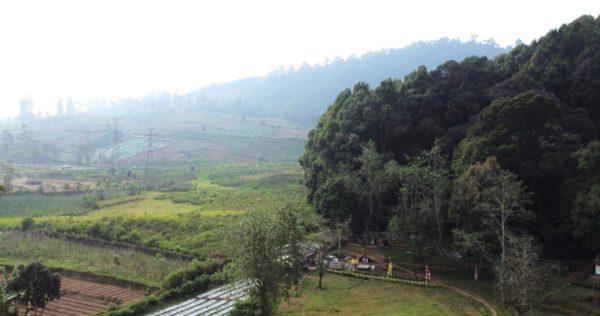
Forest and farmland surrounding the hot springs. (Photo: Trees4Trees/Kemas Duga Muis)
As part of our commitment to preserving the upstream regions of the Citarum River, which includes the Cibolang hot springs, Trees4Trees has been busy planting trees to keep the area green and healthy.
“Since 2022, our replanting program has been hard at work around the villages of Wanasuka and Banjarsari, with 54,000 trees planted in strategic locations. “We specifically planted trees on local farmland, to help the environment while also supporting local farmers,” explains Muhammad Anggy, Trees4Trees’ Cisangkuy Unit Manager.
These activities provide a range of benefits to the local landscape, from ensuring the availability of water sources, to preventing erosion, and preserving the hot springs, which provide a source of income for many people living in the area. But this is just the beginning. Around 61,000 trees will be planted in Wanasuka and Banjarsari village by the beginning of next year (2024).
Zeni is Trees4Trees’ Field Coordinator for these two villages in Cisangkuy. He hopes these replanting efforts can make a big difference in the near future. “By adding more trees, we aim to preserve the hot spring and the foothills of the twin mountains that form part of the upstream Citarum river,” says Zeni. “By improving upstream areas at the source of the river, we also hope to benefit downstream areas, bringing prosperity to local communities and returning the Citarum to its natural state.”
Writer: V. Arnila Wulandani. Editor: Christopher Alexander

